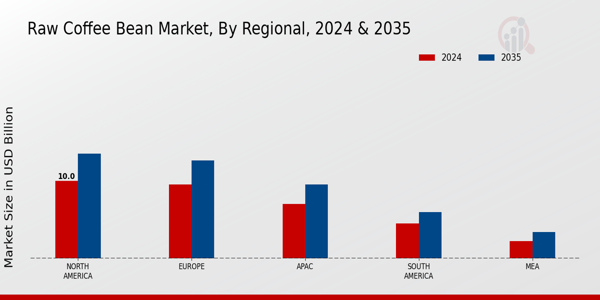The Raw Coffee Bean Market is characterized by a dynamic landscape with numerous players vying for dominance, each leveraging unique strategies to strengthen their market position. The market is influenced by growing consumer demand for high-quality coffee, sustainability trends, and evolving preferences for coffee consumption, whether in retail or food service.
Competition intensifies as brands work to establish their identities and engage with customers through innovative marketing techniques, product diversity, and a commitment to sustainability. Factors such as direct sourcing of beans, relationships with farmers, and operational efficiencies also significantly impact the competitive dynamics of the market.
The interplay of these elements creates a vibrant arena where companies must continuously adapt to maintain their relevance and attract coffee enthusiasts worldwide.
JDE Peet stands out in the Raw Coffee Bean Market thanks to its robust presence and a rich portfolio that encompasses a variety of brands catering to different consumer preferences. The company is renowned for its commitment to quality, working directly with coffee farmers to ensure sustainable sourcing, which resonates well with today's environmentally-conscious consumers.
JDE Peet's strategic investment in research and development allows it to innovate constantly, providing a diverse range of coffee products that appeal to a broad consumer base. Furthermore, its extensive distribution channels enable the company to reach various markets effectively.
This operational strength, combined with a keen understanding of market trends, positions JDE Peet's favorably within the competitive landscape, allowing it to respond swiftly to changing consumer demands.
Dunkin' Brands holds a significant role in the Raw Coffee Bean Market, leveraging its established reputation for quality and affordability. With a focus on delivering consistent coffee experiences to consumers, Dunkin' Brands has built a loyal customer base.
The company emphasizes process efficiency and product accessibility, ensuring that its coffee offerings are readily available to a wide audience through various outlets, including franchises and retail partnerships. Additionally, Dunkin' Brands continuously seeks to expand its product offerings, introducing seasonal and limited-time coffee flavors that spark consumer interest.
This ability to innovate while maintaining core product integrity has allowed Dunkin' Brands to navigate competitive pressures effectively, securing its place as a leading player in the raw coffee sector.


















Leave a Comment